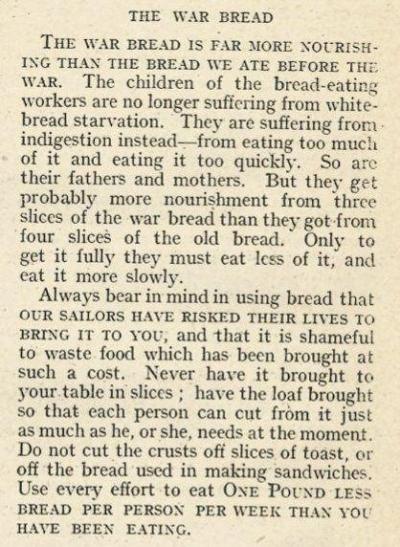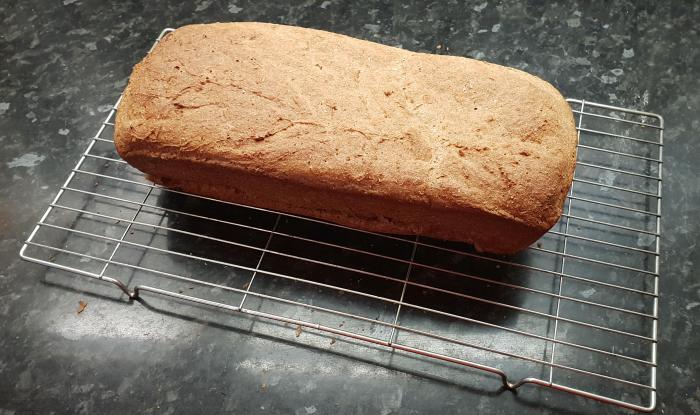21 December 2018
A wartime Christmas pudding
The rationing that was implemented in the UK during World War I wasn't lifted until 1920. The Christmas which immediately followed armistice was the harshest of all. Even so, that didn’t stop people trying to have a good time.

Rationing
The declaration of war in July 1914, resulted in a rash of panic food buying by the public, which led to a call for voluntary restraint and this worked for over a year. But Britain relied heavily on foreign imports for its basic food supplies: 80% of wheat, 40% of meat and nearly all sugar was imported. Many of the ships bringing these supplies were being sunk as a result of the war, and therefore by the summer of 1916 food resources were becoming scarce.
Nevertheless, the public pressed on until the spring of 1917, when it was announced in the House of Commons that the nation’s food stocks had dwindled to merely three to four weeks' supply. The Food Controller, Lord Davenport resigned and Lord Rhondda was appointed to the position, bringing stricter controls. The national sugar rationing scheme began in January 1918 and worked very well, with everyone receiving half a pound per week. But the success of the rationing was overshadowed by difficulties in finding other basic foods. By April 1918, rationing had been extended to cover more products.

The Win-The-War Cookery Book.
Weekly allowance
● 8 oz sugar
● 2.5 oz butter
● 2.5 oz margarine
● 2 oz lard
● 2 oz tea
● 4 oz jam
● 8 oz bacon (increased to 16oz in July 1918)
● 14 oz butcher’s meats
● 2 oz cheese (varied locally)
● All schoolchildren were required to have a weekly dessert spoon dose of VIROL, an extract of malt which enabled them to obtain the necessary nutrients and vitamins.
Bread and the 'National Loaf'
Bread wasn’t rationed, but steps were taken to decrease its consumption. For example, the government issued an order that bread should not be sold to a customer until at least 12 hours after baking, because warm bread was more difficult to cut into thin slices and the smell of fresh-baked bread was more likely to make people eat it ‘immoderately’. Eventually, a more stringent measure was introduced, which replaced the ordinary variety of white loaf with a ‘National Loaf’ made from coarsely ground wholemeal grain and other additives, often maize and rice, but mostly potato, which could be baked at home, without risk of it ending up at the bottom of the ocean.

Extolling the virtues of the National Loaf, from The Win-The-War Cookery Book.
While not as restrictive as in World War II, the impact of rationing did have an effect and fairly soon, 'Ration Recipes' were being published in periodicals across the United Kingdom. The government and many food companies also published their own recipe books.
Ordinary pleasures
In addition to rationing, the government also set out to control the public’s consumption of alcohol, because it was feared that drinking would interfere with the war effort. Many polemics were published against the impending possibility of prohibition, including a poem which has become one of the most famous declarations of the public's right to enjoy ordinary pleasures: The Rolling English Road, by G. K Chesterton (First published in a political journal called The New Witness, in 1913).

First Verse of ‘Lloyd George’s Beer’ by R.P. Weston and Bert Lee, 1915.
Nevertheless, the government did impose restrictions through the Defence of the Realm Act, 1914, which contained a section that restricted the opening hours of public houses and made it illegal for one person to purchase a beer for someone else. In addition to this, the government required all breweries to reduce the alcohol content of their beer until eventually, like the bread, a standard low alcohol brew was created, which was known as ‘Government Ale’. This led to the burgeoning of a new British craze, which has never really died down since: homebrewing.
Homebrewing
Homebrewing has been a feature of British life since before the Roman came to Rye and there are many historic recipes for ‘Pot Ales’ and wines. However, it was really during World War I, that there was a boom in interest and people found it was possible to ferment almost anything. In effect, this meant that although the government was encouraging allotments as a food supplement, most allotments served two purposes: the production of food and the production of alcohol for home consumption.
Homebrewing was not illegal, but it was not actively encouraged and so brewing recipes were generally not published nationally. Instead, they were handed around or published in locally produced recipe books, many of which were the product of the community church or chapel (many of these recipes were collected and published in 1937 in a volume called “Home Made Wine Secrets” by Peggy Hutchinson). Evidence for homebrewing can nevertheless be seen in some ‘officially’ published material, for example the recipe for National Bread given below, which was taken from a letter to the Liverpool Echo, makes use of 'Barm' as the raising agent. Barm is the yeasty foam skimmed from a fermenting liquor such as beer or wine, which indicates that the letter writer was harvesting yeast from his own brewing process. Normally, such recipes would recommend purchasing yeast from the local bakery or druggist.
The most notorious alcohol produced during World War I was made through the fermentation of mangel wurzels (Beta vulgaris, also known as 'mangold', 'fodder beet' or simply just 'wurzels'), which could produce a high alcohol content without the need for illegal distillation. Wurzel wine was a common substitute for brandy during both wars.
Rationing returns
Rationing and food control was somewhat haphazard during World War I, but lessons were learned. Information was archived and available in case of future need. Rationing was of course once again required during the World War II when the 'Dig for Victory' campaign was set up. This encouraged people to grow vegetables in their gardens and allotments to supplement the food that could be purchased. Further detail about the 'Dig for Victory' programme can be found in Kew’s Archives, please contact the archives for a list of sources.
And like rationing, these Kentish recipes, that were originally created during the First World War, were also revived and reused during the Second.
Christmas pudding on a ration

Wartime Christmas Pudding and Wurzel Butter.
Ingredients
1 lb stale national loaf, torn into small pieces (see recipe) with any really hard crust removed.
4 oz suet
8 oz mixed dried fruit (otherwise a mixture of raisins and sultanas)
8 oz grated raw carrot
1 pt cold tea, or tea and milk mixed
1 beaten egg
4 oz sugar
1 tsp mixed spice
Method
Soak the bread in the tea until all the liquid is absorbed - the bread should end up fairly mushy. Mash together until no real lumps remain, then add all the other ingredients, mixing all the time. If the mixture is too soggy, add more breadcrumbs. Grease the pudding bowl and fill with the mixture. Cover the basin with a lid or plate and place in a medium oven for a minimum of 2 hours.
Remove from oven and allow to set overnight. Reheat in a low oven for half an hour when needed, turn out and serve with...
Wurzel butter
Ingredients
8 oz sugar
1 tsp butter
1 tsp mixed spice
3 tbsp Wurzel Wine
Method
Place sugar and spice in a bowl. Melt the butter and pour into the bowl gradually, stirring all the time. Next beat the mixture until quite smooth. Add the wurzel wine and beat again. Pour into a container and store in a cool place.
WWI 'National Loaf'

A home-made National Loaf
Nb. quantities have been reduced from the original recipe (letter from Hugh R Rathbone to the Liverpool Echo on the subject of potato bread, 12 January 1918 (National Archive catalogue reference: MAF 60/251b) for the production of individual loaves at home.
Ingredients
11 oz coarsely ground wholemeal flour
5 oz boiled and mashed potatoes
1½ oz barm may be replaced with
1½oz of baker's yeast
½oz easy-bake yeast (follow instructions on packet)
4 to 5 pints of warm water
salt to taste
Method
Mix the potatoes in a basin with the barm and about half of the flour with a little of the water into a sponge. Leave it to rise for 15 minutes.
Knead in the rest of the flour, salt and sufficient water until a soft dough starts to form. Turn the dough onto a lightly floured surface. Knead until smooth and elastic, this can take up to fifteen minutes.
Shape into a loaf and drop into a lightly greased 2lb loaf tin, or shape into a round on a greased baking tray. Allow to stand and rise for about 45 minutes or until the dough has doubled in size.
Preheat your oven to Regulo 8, which is 450°F or about 230°C (use 210°C if the oven is a fan assisted electric)
Brush the top of the dough with a little milk, place in the centre of the oven and bake for 15 minutes then reduce the oven temperature to Regulo 6 which is 400°F or 200°c (or 180°C for fan assisted electric), then cook for a further 15-20 minutes until the bread is risen.
Wurzel wine
(Make in March)
Ingredients
1 gal mangel wurzels
1 gal water
3½ lbs honey (or 3 lbs sugar if available)
1 oz yeast
½ oz hops
Method
Clean the mangel wurzels by washing well and take off the roughest roots. Dice and boil in the water for an hour and strain.
Put the sugar into the liquid and stir until dissolved, then add the hops.
When the liquid is lukewarm, sprinkle in the yeast and leave for three weeks to ferment.
Strain through muslin and bottle.
Store in a cool place until needed.


